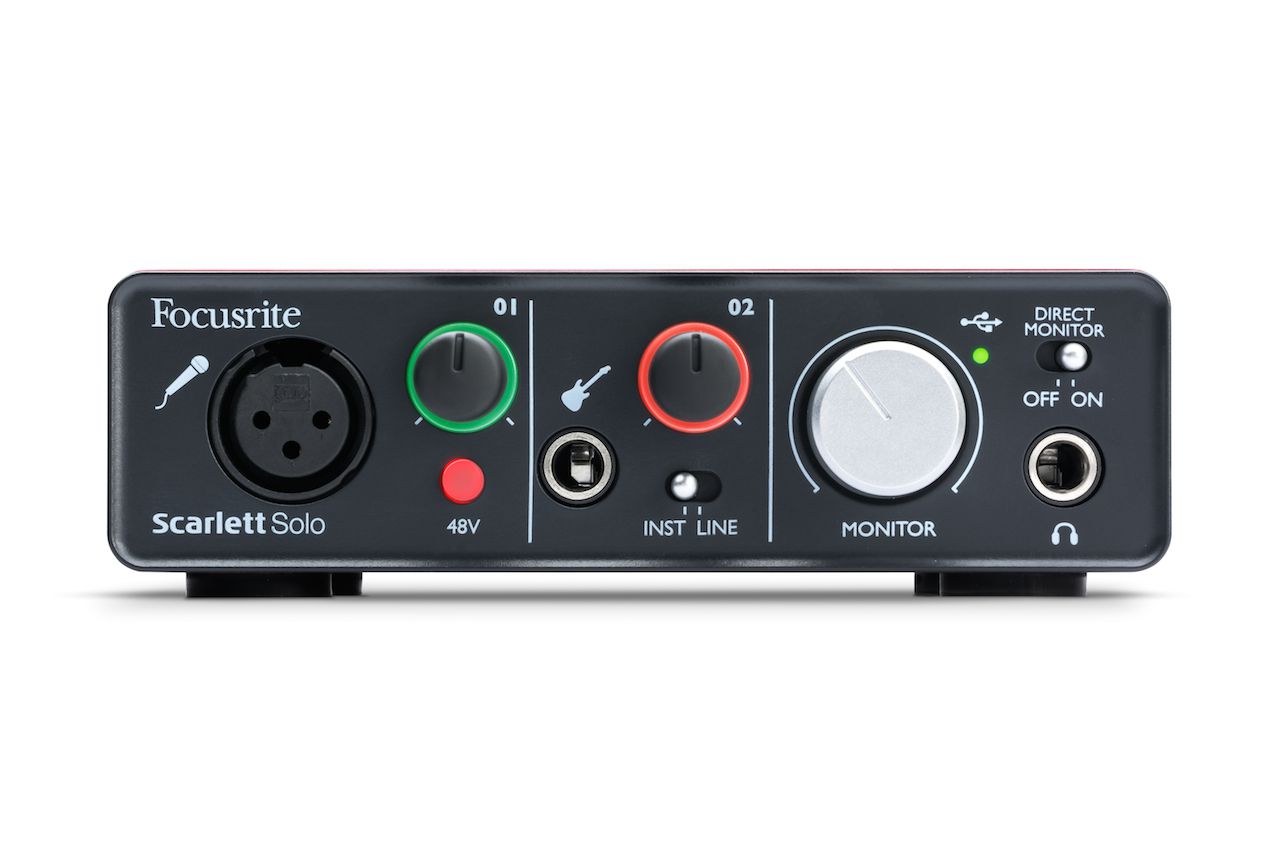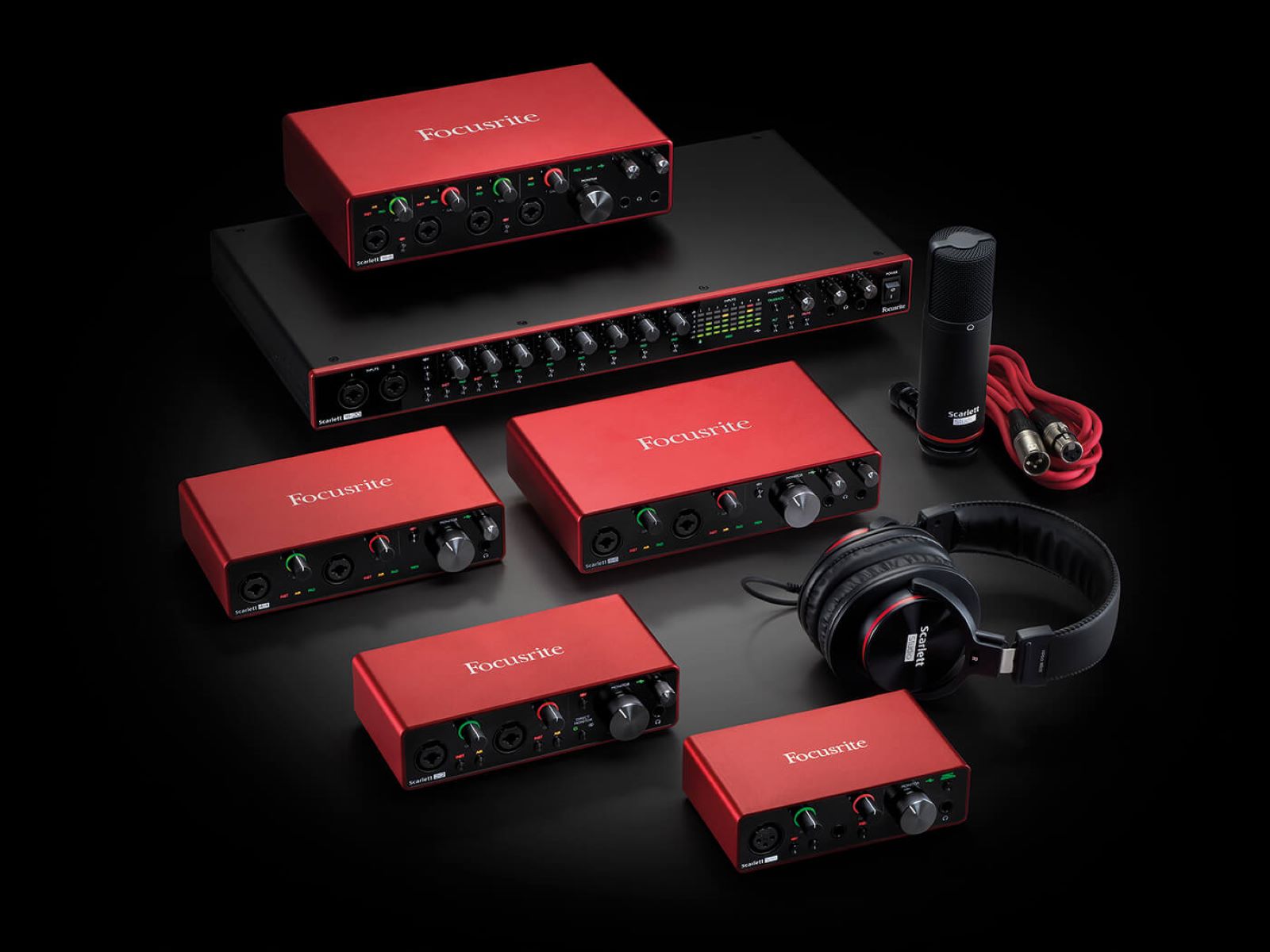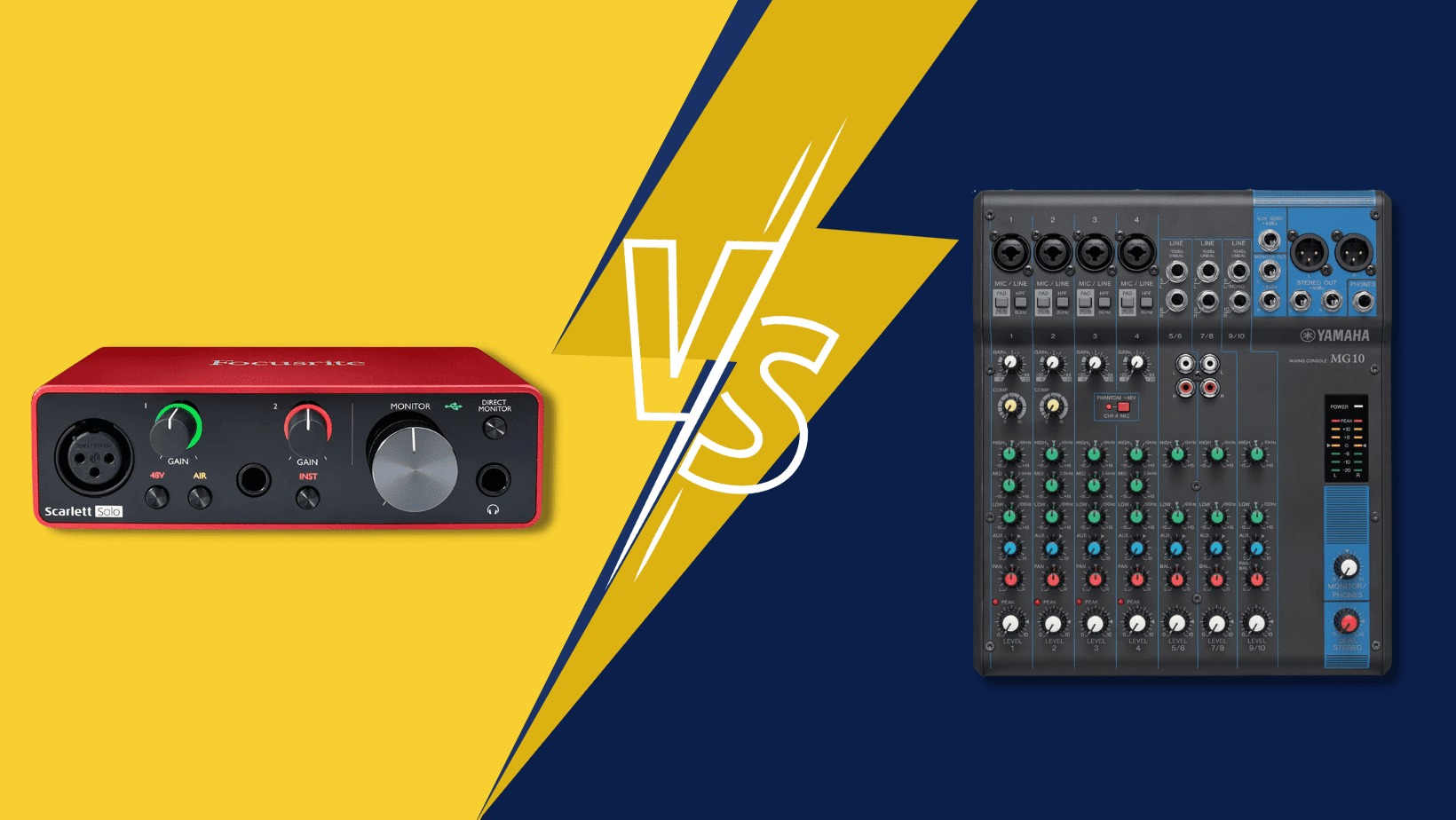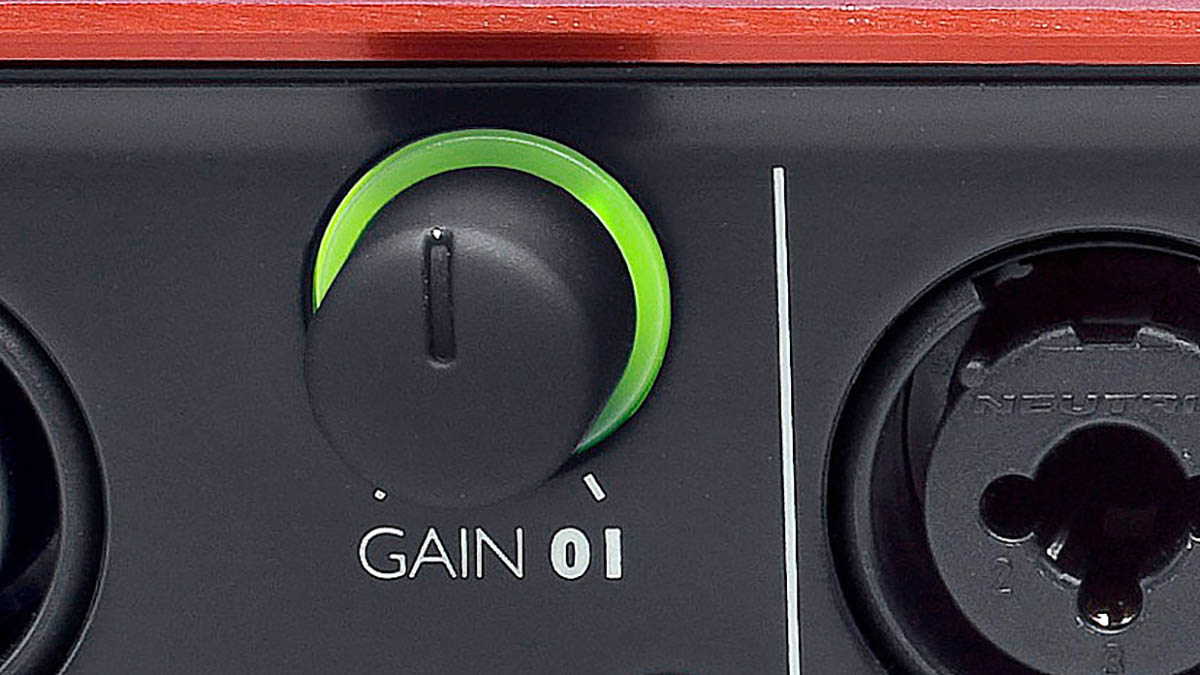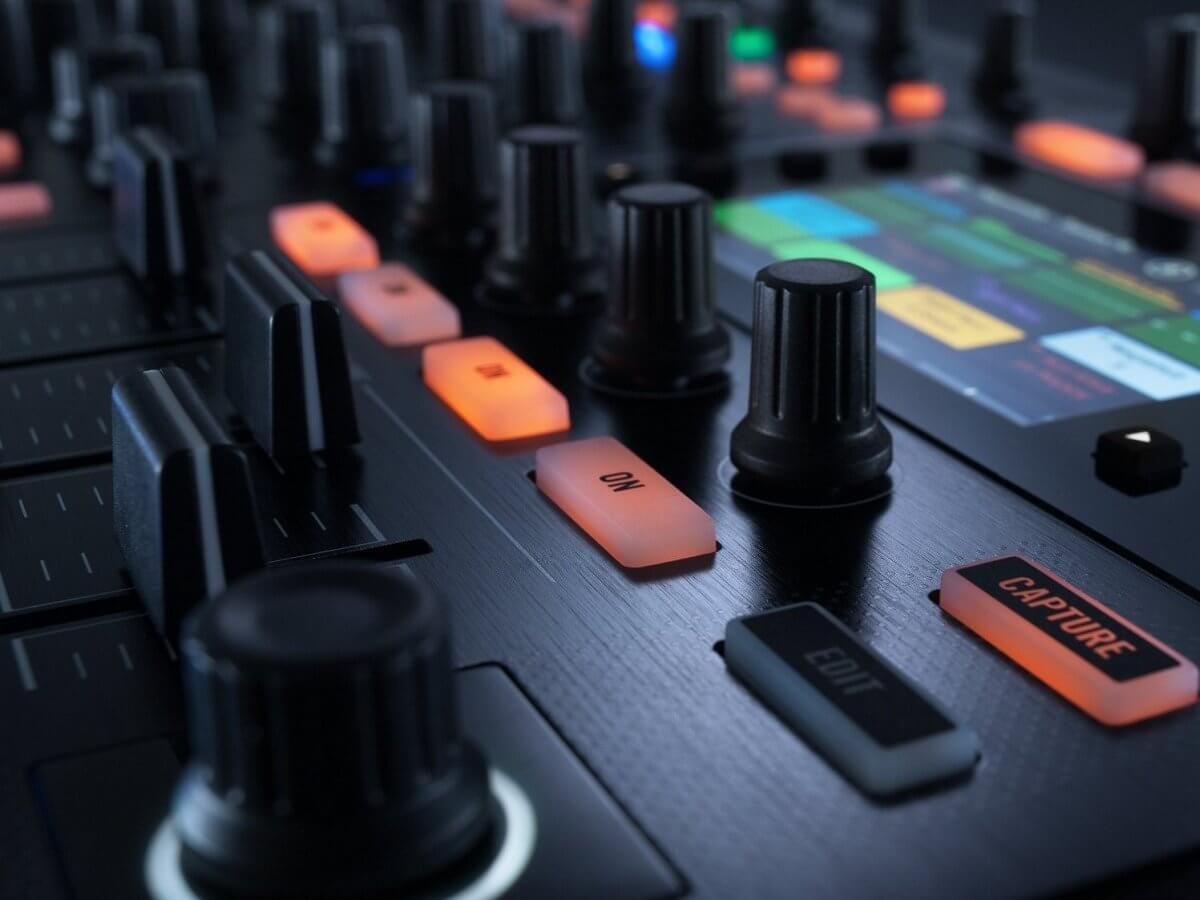Home>Production & Technology>Audio Interface>What Is Compression Audio Interface Built In


Audio Interface
What Is Compression Audio Interface Built In
Modified: March 11, 2024
Discover the benefits of using a compression audio interface built in to enhance your audio recordings. Improve your sound quality and reduce unwanted dynamics.
(Many of the links in this article redirect to a specific reviewed product. Your purchase of these products through affiliate links helps to generate commission for AudioLover.com, at no extra cost. Learn more)
Table of Contents
Introduction
Welcome to the world of audio interfaces! If you’re a musician, podcaster, or audio enthusiast, you probably understand the importance of having a reliable and high-quality audio interface. But have you ever wondered about the role of compression in audio interfaces?
Compression is a powerful tool that can greatly enhance the audio recording and production process. It can help even out the dynamic range of recordings, resulting in a more polished and professional sound. In this article, we will take a closer look at compression in audio interfaces and explore its benefits.
Compression is a technique that reduces the difference between the loudest and softest parts of an audio signal. It works by automatically attenuating the volume of louder sounds, while leaving quieter sounds unaffected. This process helps to create a more consistent and balanced audio output.
There are various types of compression algorithms used in audio interfaces, each with its own unique characteristics. From optical compressors to VCA (Voltage-Controlled Amplifier) compressors, these algorithms offer different ways to shape and control the audio signal.
When choosing a compression audio interface, it’s essential to consider the features that best suit your needs. Whether you’re recording vocals, instruments, or podcasts, specific factors such as number of channels, connectivity options, and ease of use should be taken into account.
Join us as we dive deeper into the world of compression audio interfaces. Discover the benefits they offer and learn how to choose the perfect one for your audio production needs. Let’s explore the magic of compression together!
Understanding Compression in Audio Interface
Compression is a crucial tool in audio production that helps control the dynamic range of audio signals. In simple terms, it smooths out the volume discrepancies between the softest and loudest parts of a recording.
When recording audio, it’s common for some parts to be significantly louder than others. This disparity in volume can cause issues when mixing and mastering the audio, as it can lead to certain parts being too loud and overpowering, while other parts remain too quiet and get lost in the mix.
Compression in audio interfaces works by automatically reducing the volume of the audio signal when it exceeds a set threshold. When the signal crosses this threshold, the compressor comes into action, bringing down the level of the audio to maintain a more consistent and balanced sound.
An important parameter to consider when working with compression is the ratio. The ratio determines how much the audio will be attenuated once it surpasses the threshold. For example, a compression ratio of 4:1 means that for every 4dB the input signal exceeds the threshold, the output signal will only increase by 1dB.
Another critical aspect of compression is the attack and release times. The attack time determines how quickly the compression responds when the audio signal exceeds the threshold, while the release time controls how long the compression stays active after the signal falls back below the threshold. These settings impact the character and transparency of the compression effect.
Understanding the concept of compression and how it works in an audio interface is essential for achieving professional-sounding recordings. By utilizing compression effectively, you can bring out the nuances in your audio, control dynamic range, and ensure a consistent and balanced mix.
Benefits of Compression in Audio Interface
Compression in audio interfaces offers numerous benefits for musicians, podcasters, and audio professionals alike. Let’s explore some of the key advantages it brings to the table:
- Dynamic Control: One of the primary benefits of compression is its ability to control the dynamic range of audio signals. By reducing the volume of louder sounds, compression helps to prevent clipping and distortion, resulting in a cleaner and more professional sound.
- Enhanced Presence and Punch: Compression can add a sense of presence and impact to your audio recordings. By evening out the levels, it allows quieter elements to emerge more prominently, making the overall sound more powerful and impactful.
- Improved Clarity: Compression helps to bring out the details in your audio by reducing background noise and unwanted fluctuations. It can make vocals and instruments stand out more clearly, resulting in a cleaner and more intelligible mix.
- Consistency Across Tracks: When working with multiple tracks or different sources, compression ensures a more consistent and balanced sound. By bringing down the volume of louder elements, it helps to create a cohesive mix where all the parts sit well together, regardless of their individual levels.
- Increased Sustain: Compression can enhance the sustain of instruments, particularly for guitarists and bass players. By reducing the initial attack and extending the decay, compression adds a smooth and controlled sustainer effect, resulting in a more desirable and expressive sound.
- Fatigue Reduction: Compression can reduce listener’s fatigue caused by overly dynamic recordings. By taming the dynamic range, it ensures that the difference between the softest and loudest parts of your audio is more comfortable to listen to for extended periods.
- Improved Mix Before Mastering: Compression applied at the recording or mixing stage can help create a more balanced and polished mix, reducing the need for excessive compression during mastering. This allows for a more transparent and natural sound in the final master.
These are just a few of the many benefits that compression brings to your audio recordings. When used correctly and in moderation, compression can transform your recordings, adding depth, clarity, and a professional touch to your sound.
How Compression Works in Audio Interface
Understanding how compression works in an audio interface is key to utilizing it effectively in your recordings. Compression operates based on a set of parameters and algorithms that manipulate the audio signal in real-time. Here’s a breakdown of the process:
1. Threshold: The threshold is the level at which compression begins to take effect. When the audio signal exceeds the threshold, the compressor kicks in to reduce the volume.
2. Ratio: The ratio determines the level of compression applied to the audio signal once it exceeds the threshold. For example, a ratio of 4:1 means that for every 4dB the input signal exceeds the threshold, the output signal will only increase by 1dB.
3. Attack Time: The attack time determines how quickly the compression reacts to an audio signal that exceeds the threshold. A faster attack time means the compression engages almost instantaneously, while a slower attack time allows some initial transient peaks to pass through before compression is applied.
4. Release Time: The release time controls how long the compression remains active after the audio signal falls back below the threshold. A shorter release time makes the compression release quickly, while a longer release time keeps the compression engaged for a more sustained period.
5. Knee: The knee refers to the shape of the compression curve as the audio signal crosses the threshold. A soft knee applies gradual compression as the signal approaches the threshold, while a hard knee applies a more abrupt compression once the threshold is crossed.
6. Make-up Gain: After compression is applied, the overall level of the audio signal might be reduced. Make-up gain allows you to boost the compressed signal to match the desired level while maintaining a consistent volume.
The interaction between these parameters and algorithms determines how compression affects the audio. By adjusting the threshold, ratio, attack time, release time, knee, and make-up gain, you can tailor the compression to suit your specific needs and achieve the desired sound.
Remember, it’s crucial to strike a balance when using compression. Applying excessive compression can result in a dull and lifeless sound, while too little compression may not achieve the desired level of control. Experimentation and careful listening are key to finding the right settings for your audio recordings.
Types of Compression Algorithms in Audio Interface
Compression algorithms are the building blocks of the compression functionality found in audio interfaces. Different types of algorithms offer unique characteristics and sonic qualities. Here are some common types of compression algorithms used in audio interfaces:
- 1. VCA (Voltage-Controlled Amplifier) Compressors: VCA is one of the most widely used compression algorithms. VCA compressors provide precise control over audio signals and offer a transparent sound. They are known for their fast response and low noise, making them suitable for a wide range of applications.
- 2. Optical Compressors: Optical compressors rely on the properties of an optical circuit to achieve compression. They have a smooth and vintage-like sound character, often described as warm and musical. Optical compressors are particularly well-suited for vocals, acoustic instruments, and gentle, musical compression.
- 3. FET (Field-Effect Transistor) Compressors: FET compressors are known for their fast attack times and aggressive compression characteristics. They are commonly used for adding character and punch to drums, electric guitars, and other sources that benefit from a more aggressive and dynamic sound.
- 4. Variable Mu Compressors: Variable Mu compressors are tube-based compressors known for their gentle and smooth compression characteristics. They provide a natural and musical compression, and are often used for mastering purposes to add cohesive glue and polish to the final mix.
- 5. Digital Compressors: Digital compressors utilize algorithms implemented in digital signal processing. They offer precise control and a wide range of options, including various compression modes, sidechain filters, and advanced metering. Digital compressors are versatile and can emulate the characteristics of analog compressors or provide unique digital compression effects.
Each compression algorithm has its own sonic signature and is suitable for different audio applications. Experimentation and understanding the characteristics of different algorithms can help you achieve the desired sound and enhance your recordings accordingly.
It’s worth noting that many audio interfaces offer multiple compression algorithms, allowing you to choose the one that best suits your needs. Whether you’re seeking transparency, vintage warmth, aggressive dynamics, or digital precision, the variety of compression algorithms available in modern audio interfaces ensures that you can find the right tool for your specific requirements.
Common Features of Compression Audio Interfaces
Compression audio interfaces come with a range of features that enhance the compression process and allow for greater control over the audio signal. Here are some of the common features you can expect to find in compression audio interfaces:
- Threshold and Ratio Controls: Compression audio interfaces provide adjustable threshold and ratio controls, allowing you to specify the level at which compression is applied and the amount of compression applied once the threshold is exceeded.
- Attack and Release Time Controls: These controls determine the speed at which the compression engages and disengages. Adjustable attack and release times give you the flexibility to shape the dynamic response of the audio signal and control how quickly or slowly compression is applied or released.
- Make-up Gain: Many compression audio interfaces offer make-up gain controls to compensate for any level reduction that occurs during compression. Make-up gain allows you to boost the compressed signal to match the desired output level, ensuring a consistent volume.
- Sidechain: The sidechain feature allows you to shape the compression response based on a separate input signal. By routing a different audio source to the sidechain, you can create dynamic and creative compression effects, such as ducking the music when vocals are present.
- Multiple Channels: Some compression audio interfaces offer multiple channels, enabling you to independently compress each channel and customize the compression settings for different sources. This feature is particularly useful for multitrack recording and mixing.
- Metering: Metering capabilities display the input and output levels of the audio signal, as well as the amount of gain reduction applied by the compressor. This visual feedback helps you monitor and adjust the compression settings accurately.
- Sidechain Filters: Advanced compression audio interfaces may include sidechain filters that allow you to shape the frequency response triggering the compression. With sidechain filters, you can target specific frequency ranges, emphasizing or attenuating certain frequencies in the audio signal.
- Linking: Linking multiple channels enables you to control the compression settings uniformly across linked channels. This feature is particularly useful when compressing stereo sources, ensuring that both the left and right channels receive the same amount of compression.
These are just a few of the common features you can find in compression audio interfaces. The availability of features may vary depending on the model and brand of the interface. Assessing your specific needs and preferences will help you determine which features are most important for your audio production workflow.
Choosing the Right Compression Audio Interface
When selecting a compression audio interface, several factors should be considered to ensure you choose the right one for your specific needs and preferences. Here are some essential considerations to keep in mind:
- Audio Quality: The audio quality of the interface is paramount. Look for a compression audio interface that provides high-resolution audio and low-latency performance for accurate and transparent compression.
- Number of Channels: Determine the number of channels you require for your audio production setup. If you work with multiple sources simultaneously, such as recording bands or live performances, a multi-channel compression audio interface would be beneficial.
- Connectivity: Consider the connectivity options that best suit your setup. Whether you prefer USB, Thunderbolt, or PCIe interfaces, ensure compatibility with your computer and other audio devices.
- User Interface and Controls: The user interface and controls should be intuitive and easy to navigate. Look for an interface that offers clear and ergonomic controls, allowing you to make precise adjustments to the compression settings.
- Software Integration: Some compression audio interfaces come bundled with software that enhances the functionality and control. Check if the interface is compatible with popular digital audio workstations (DAWs) and other software, allowing for seamless integration into your workflow.
- Budget: Set a budget range and consider the features and quality that fit within your financial means. While it’s important to invest in a reliable and high-quality audio interface, there are options available at various price points.
- Reviews and Recommendations: Research and read reviews from trusted sources or seek recommendations from fellow musicians and audio professionals. Real-world experiences and feedback can provide valuable insights for choosing the right compression audio interface.
- Brand and Warranty: Consider the reputation and reliability of the brand. Look for manufacturers that offer solid warranties and customer support, ensuring peace of mind and assistance if any issues arise.
By carefully evaluating these factors, you can choose a compression audio interface that aligns with your specific requirements and helps you achieve professional and polished audio recordings. Always consider your current and future needs to ensure the interface can grow with your evolving production setup.
Conclusion
Compression is a critical tool in the world of audio interfaces. It allows for dynamic control, improved clarity, and enhanced presence in your recordings. Understanding the principles of compression and the various types of compression algorithms is key to harnessing its power effectively.
When choosing a compression audio interface, consider factors such as audio quality, number of channels, connectivity options, user interface, software integration, budget, and reviews. Finding the right interface that meets your specific needs and preferences will ensure a seamless and productive workflow.
Remember to experiment with the threshold, ratio, attack time, release time, knee, and make-up gain settings to achieve the desired compression effect. By finding the perfect balance and leveraging the benefits of compression, you can create professional-sounding recordings with depth, clarity, and a balanced dynamic range.
Whether you’re a musician, podcaster, or audio professional, a compression audio interface is a valuable asset to add to your toolkit. It opens up a world of possibilities for shaping your sound and taking your recordings to the next level. So dive into the realm of compression audio interfaces, unleash your creativity, and enjoy the transformative power it brings to your audio production journey.



